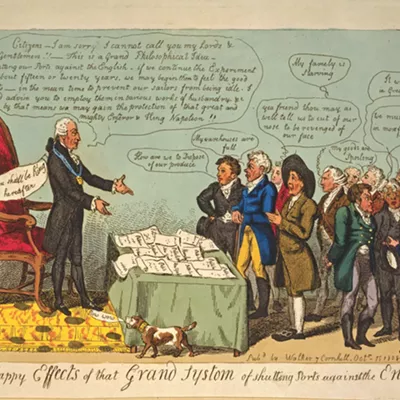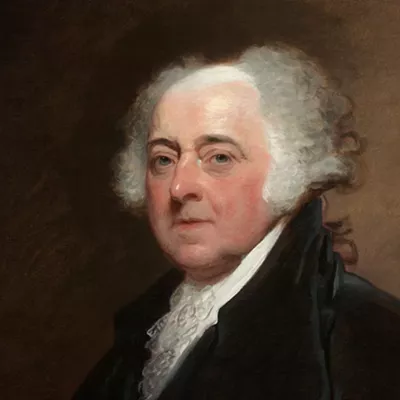During the bizarre spectacle of the Republican primary debates in 2016, "braggadocious" Donald Trump crowed about the size of everything from his fortune to his hands.
Who, then, could be surprised by the president's latest scheme to "Make America Great Again" by buying Greenland? When size matters, adding territory over three times the size of Texas to the United States would quite literally make America greater.
In a world where wind turbines cause cancer and hurricanes can be nuked, it is too easy to dismiss Trump's Greenland scheme as simply the latest absurdity in a surreal presidency. But buying the autonomous territory from Denmark would follow the rule, rather than mark an exception, in American history.
As good Pacific Northwesterners, we know that presidents before Trump have struck mammoth real estate deals with foreign countries. Arguably the most famous presidential real estate deal was Thomas Jefferson's purchase of the Louisiana Territory from Napoleonic France in 1803. For $15 million, Jefferson almost doubled the size of the country, adding territory that stretched from the Mississippi River to parts of the Inland Empire in Idaho.
Louisiana wasn't the last example of America's insatiable hunger for land deals. From Florida to Alaska, the United States would buy almost anything it could lay its hands on. And Americans did not confine their ambitions to the North American mainland. In the 1850s, Southern slaveholders put together a failed attempt to buy Cuba from Spain. Historically speaking, Greenland would fit quite nicely into the United States' real estate portfolio.
Trump's whims are notoriously unpredictable, but in casting his envious eyes over Greenland, he shares the same imperial vision as his presidential predecessors. Capitalism, particularly the exploitation of natural resources and mineral wealth, has always underpinned American expansion.
While Trump's Greenland overture seemed to come from nowhere, it turns out that the president has been kicking this idea around for some time. The United States government might not believe in global warming, but Trump wants to make sure that American corporate interests will monopolize Greenland's abundant natural and mineral resources as the Arctic ice melts with gathering speed.
President Jefferson also viewed the Louisiana Territory in terms of resource extraction. He dispatched Lewis and Clark on their expedition to the Pacific Northwest with orders to identify resources to exploit. The explorer duo's records noted the location of salt licks, lead deposits, and other natural and mineral resources. As Lewis and Clark handed peace medals to Native peoples, their expedition paved the way for the destruction of indigenous cultures based on economic reciprocity and their replacement with rapacious capitalism, grounded in the commodification of nature.
Jefferson, at least, opposed monopoly. While the lands and labor of Native and enslaved peoples could be ruthlessly exploited, he feared that widening economic equality among white men would threaten the survival of the republic.
In Trump's America, by contrast, crony capitalism is the order of the day. It is hard to imagine what Greenlanders could possibly have to gain from becoming colonial subjects of American corporate interests.
Luckily for the people of Greenland, Danish Prime Minister Mette Frederiksen dismissed Trump's proposal as "absurd." Not one to be told no, the president of the United States lashed out at Ms. Frederiksen on Twitter. The leader of the free world postponed his planned state visit to Denmark and insulted the prime minister by calling her words "nasty," his term of choice for attacking women who stand up to him. Rather than making America look bigger, Trump's Greenland gambit has once again made the United States seem so very small. ♦
Lawrence B. A. Hatter teaches early American history at Washington State University. He is the award-winning author of Citizens of Convenience: The Imperial Origins of American Nationhood on the U.S.-Canadian Border.
























